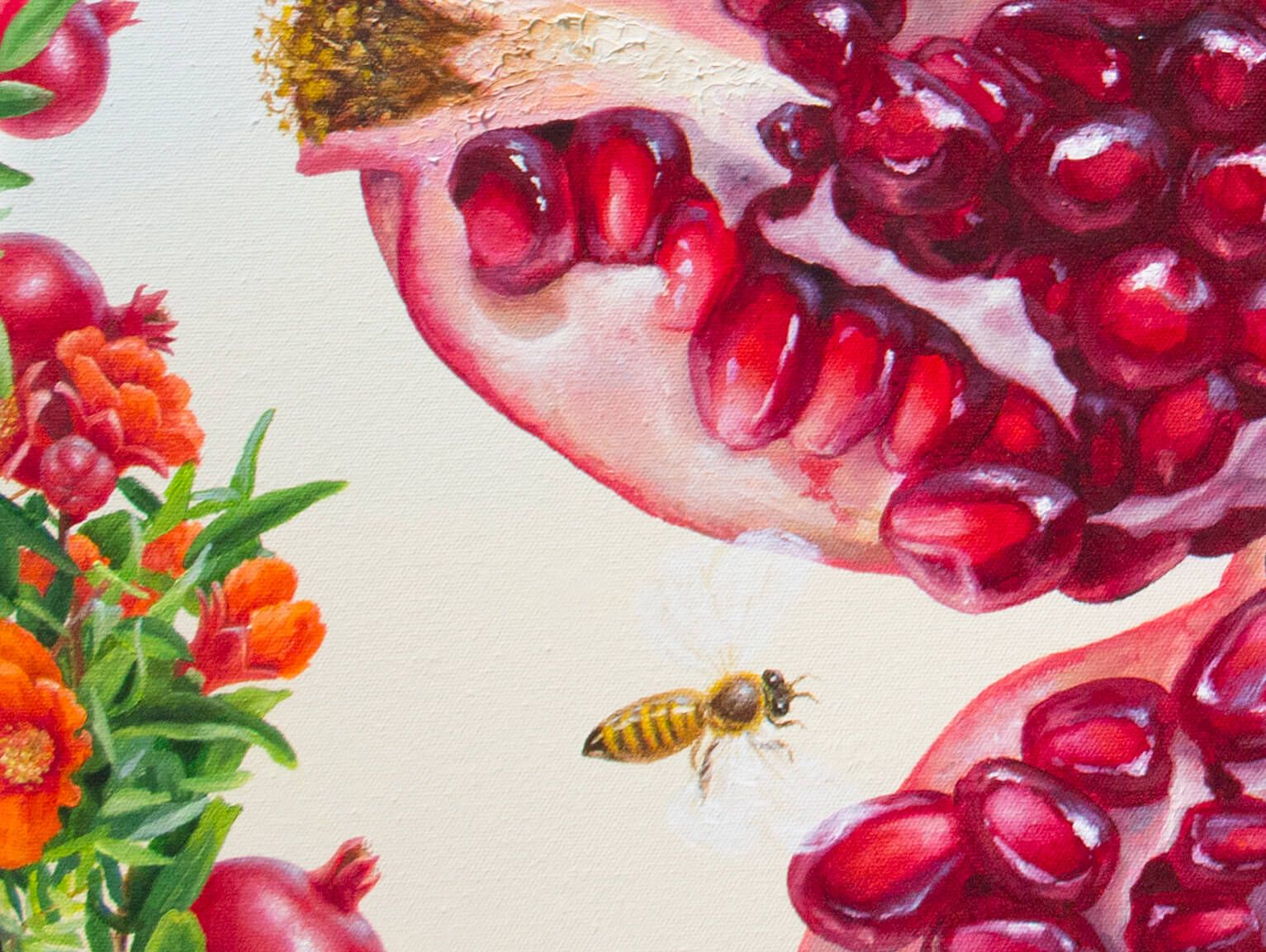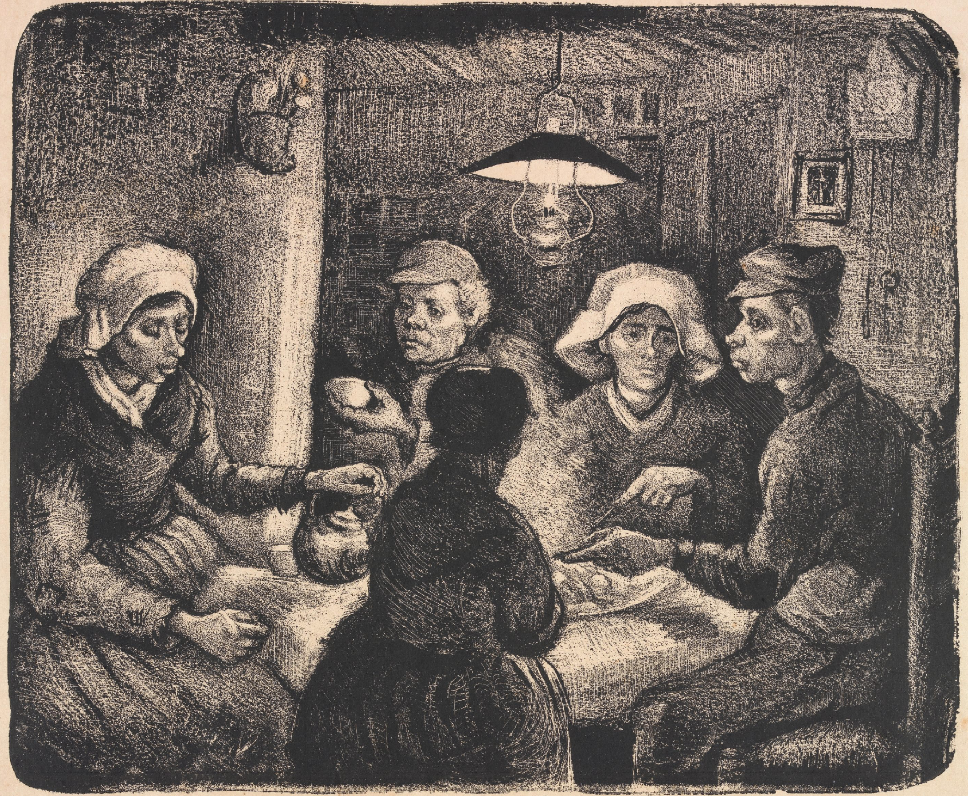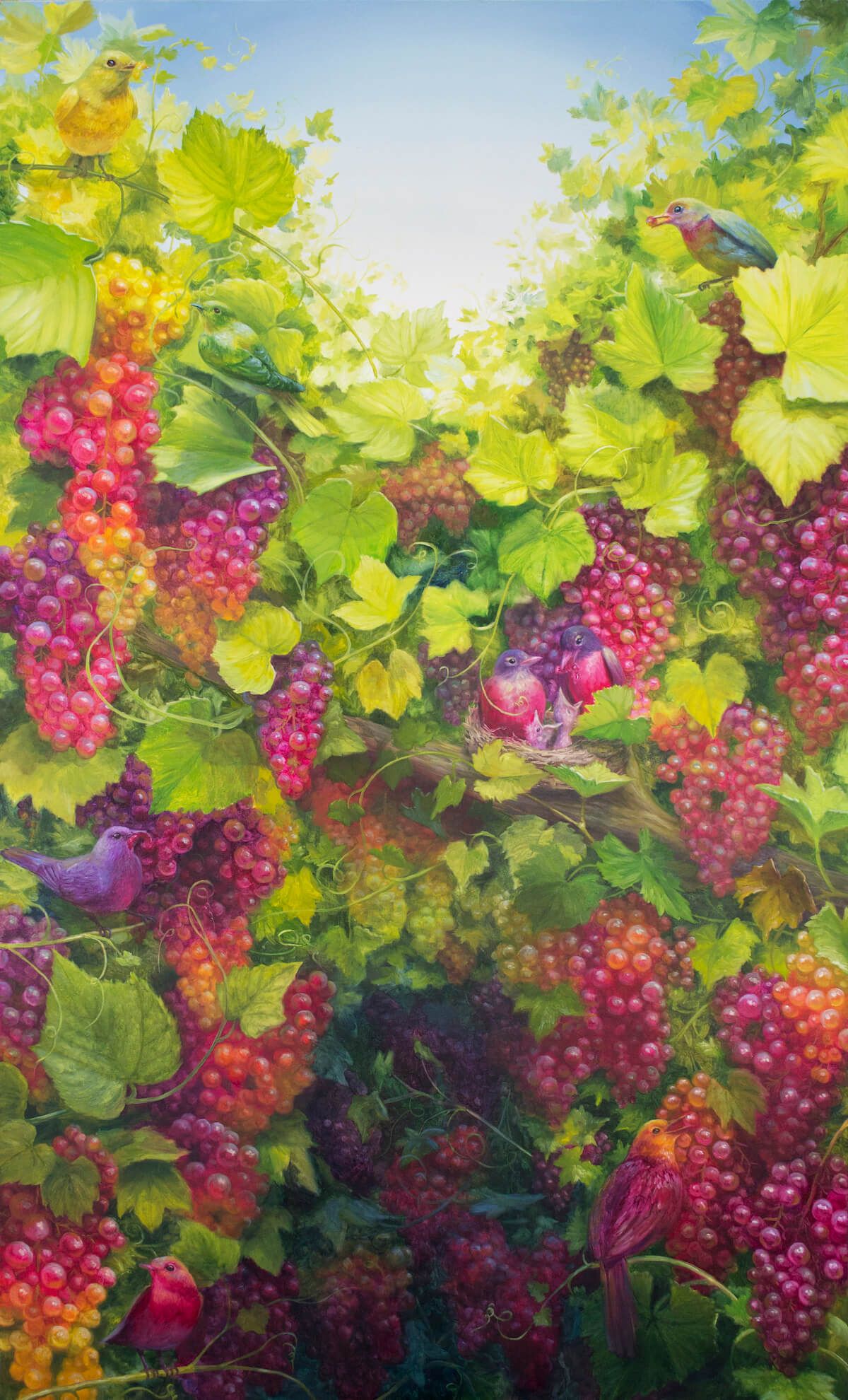How Moutabal Changed A Professor’s Life
Still Life: Flowers and Fruit. Severin Roesen. 1850-55. Oil on canvas. Courtesy of The Met Public Domain
In the 1960s, Peter Heine was 18 years old and visited Afghanistan for the first time. “It was an important trip,” he says. Since the first time he stepped into the Middle East, he never turned away from it. He devoted his life to learning more about Islam, Arab culture, and Middle Eastern food.
Heine had already started to learn Arabic at the time when he took a trip to Baghdad. His Arabic tutor taught him a word that was the gateway to new experiences and, specifically, flavors. The word was ‘badhnjan’.
“What does that mean?” he asked his tutor, who advised him to go to a local restaurant and order it and eat it. “The German word was aubergine,” he says, “and I had never seen this vegetable before.”
Now, at 78 years old, the German professor has lived through a rich time in history and continues to publish valuable information about his research and experiences throughout the Middle East since 1985. With a collection of 165 cookbooks on Arab cooking, he shares his experience and knowledge on the flavorful world and history of Middle Eastern cuisine.
Heine had visited nearly all the Arab countries, purchasing cookbooks from each and enjoying cooking a meal or two with his wife. DIscussing his latest publication, the Culinary Crescent, Heine sits with Ithraeyat and talks about the treasures, tastiness, and tales about Middle Eastern cuisine.
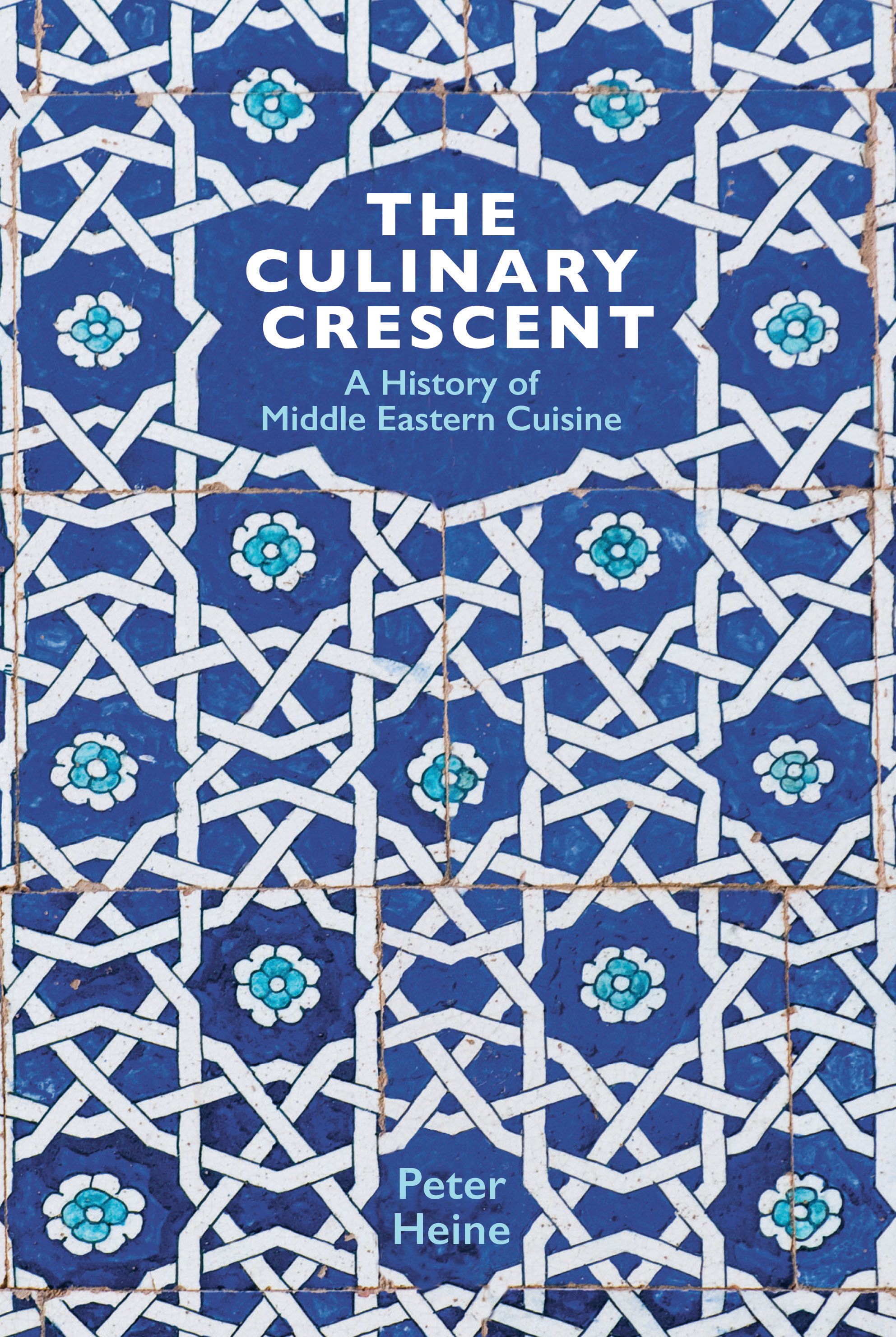
Culinary Crescent by Peter Heine.
Food has many aspects. One is a cultural aspect. I think you could talk about food culture and how it changes over time. For example, when deep frozen food came to the Middle East, it made an impact on the way housewives were cooking. Cooking also changed in some Arab countries when women started to be busy with work and were not at home, like many Arab women now! So, this changed the way of cooking.
I remember reading in Arab News and Saudi Gazette many years ago, around the 1980s, an article that said there had been a change in cooking because there were no restaurants dedicated to serving a Saudi cuisine menu. There were Italian restaurants, Chinese, Indian restaurants… but no (or very few) restaurants serving only Saudi food. I remember the newspaper said, “Perhaps we are going to lose our culinary culture.”
There are traditions in cooking. For example, the central ingredient in Germany is the potato. When migrants came to Germany for work, they brought their children. And these children were from Turkey, Italy, Spain, Portugal, etc. They called the German kids, “Potato!” And the German children called the Italian children, “Spaghetti!” So, you see, there is a social moment, a connection, in food. I found it very interesting.
For the national identity of countries, cooking is important. At the beginning, when the first modern cookbooks came, they were for young women who had not learned how to cook by their mothers. It started in Lebanon in the mid-1950s and early 1960s. Then, at the time of Arab nationalism, there were published books on Arab cooking. It was called Arab cooking—not Saudi, or Iraqi, or to any particular country. And today, you can find cookbooks on famous chefs who work in international hotels and it is also on tv. There are many cooking shows and programs from Egypt, Lebanon, and all over the world. There is a change in cooking in many ways, and many aspects!
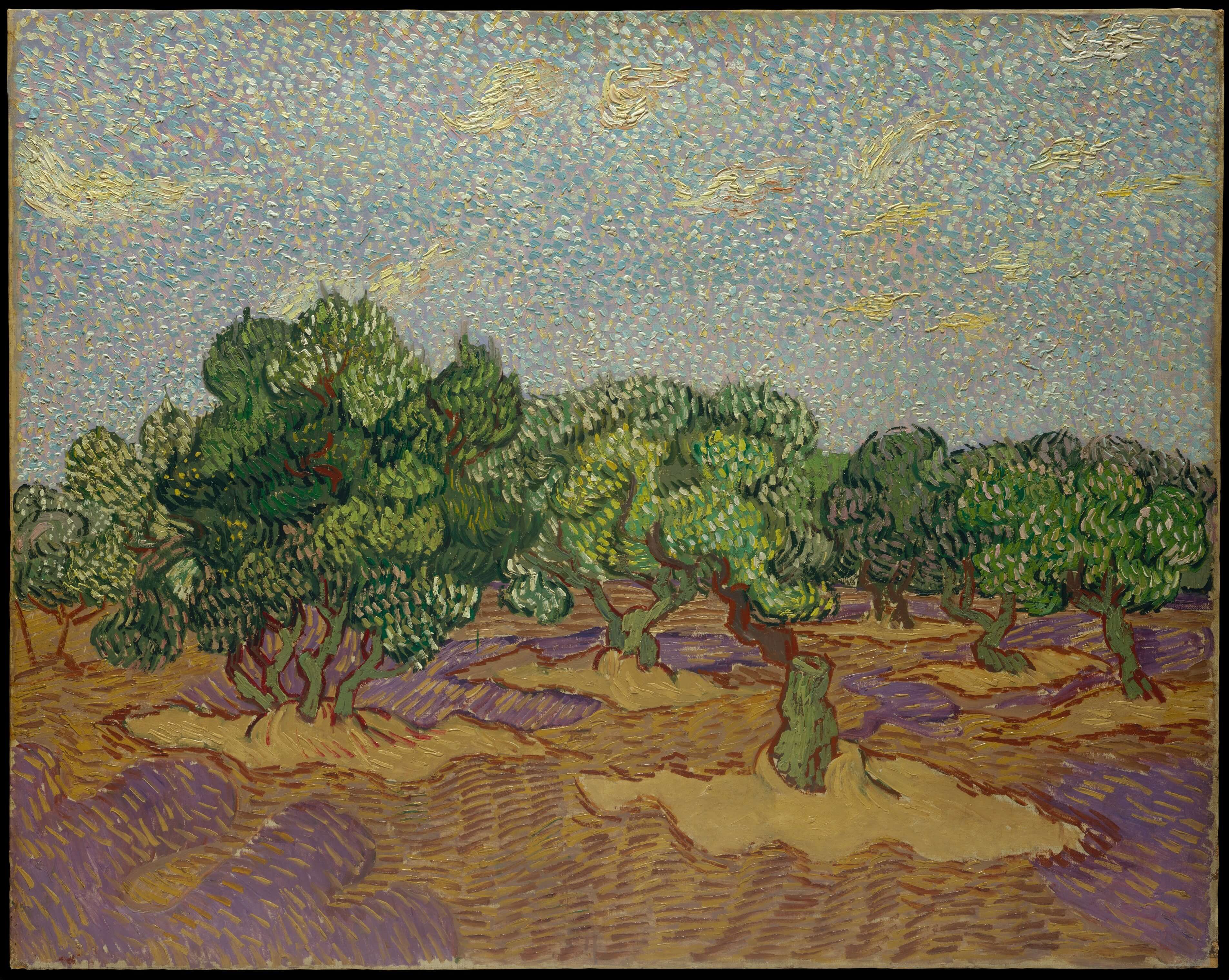
Olive Trees. Vincent Van Gogh. 1889. Oil on canvas. Courtesy of the MET Public Domai.
There is a strong debate about this. If you go to Israel, they will offer you hummus. They will say, “Hummus is an Israeli food.” There were conferences on the history of hummus in Lebanon, and they said, “this is an Arab food.” It is served in nearly all Arab countries.
Hummus is a shared dish. This would be a political answer.
I think the early history of Saudi food is a food of the nomads, the bedouins. Meat and milk was very important. They produced milk from the sheep, they made different types of dairy products like butter and buttermilk (laban).
I think looking into the pre-modern times is useful. There are vegetables that are very important. If you look into old cookbooks, and count the number of recipes, you will find that there are more recipes using vegetables than meat. Of course, we know eating vegetables is very important for nutritional benefits.
I think everything can be produced. There is always the question of water. For example, if you go to Morocco, you will find the shore of the Atlantic, thousands and thousands of shelters produce tomatoes and paprika. There are two reasons for that: it is exported to western Europe, and it is produced for the local population. Ultimately, food is a part of culture.
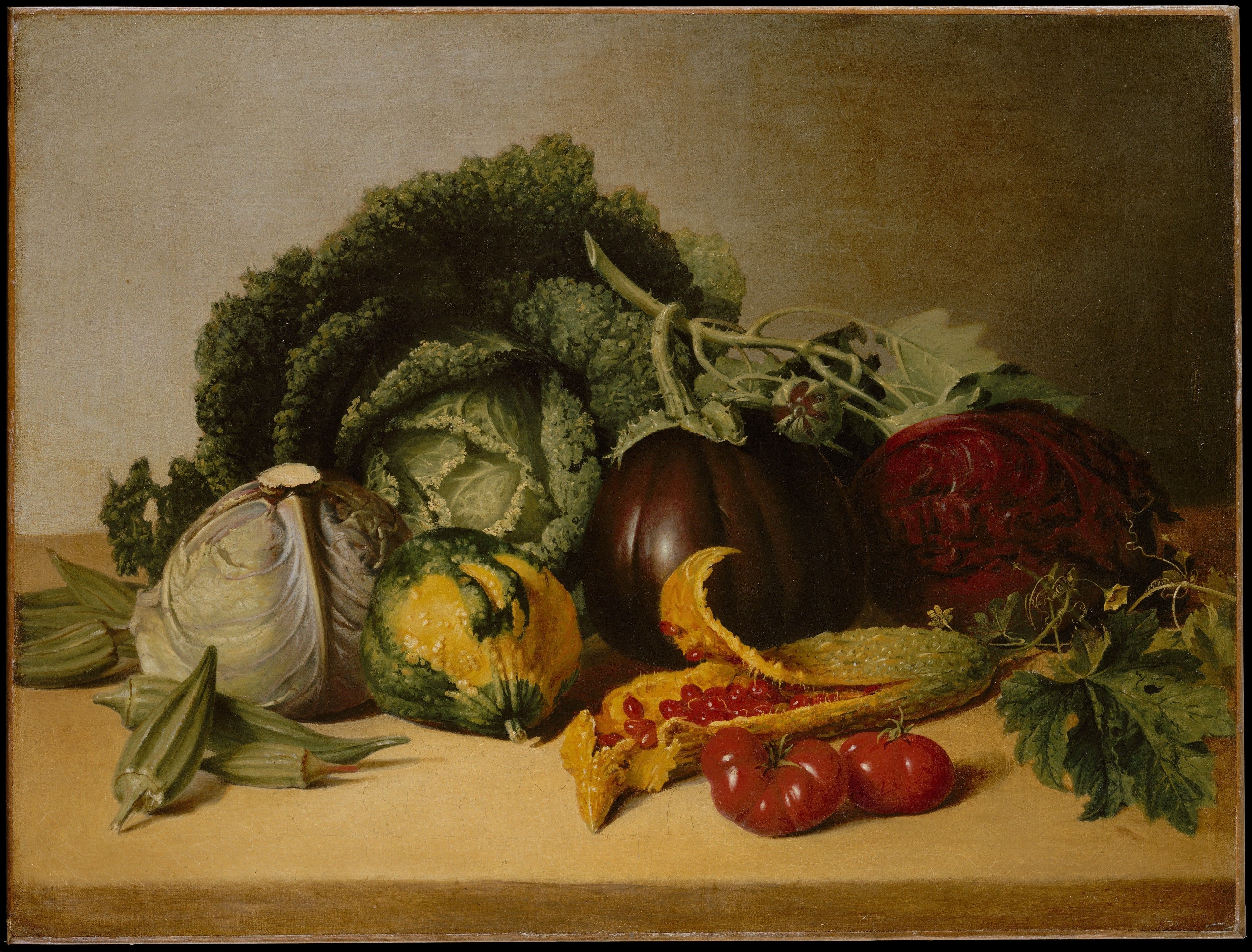
Still Life Balsam Apple and Vegetables. James Peale, 1820s. Oil on canvas. Courtesy of The MET Public Domain
There are different kinds of bread from different Arab countries. For example, North African bread is produced from a different type of corn when compared to Egypt or the Eastern part of the Arab world. You can find different ways of producing bread. Colonialism influenced foods in countries. In North Africa, when French colonialism happened, they brought their bread there. You can find the French bread that they call ‘flute’, it is a very long bread. In certain regions, for example Iraq, rice is more important than bread. In many countries, people eat meat with bread. Bread is used as a spoon.
Olive oil is used in main dishes in nearly all Arab countries and I have to say, also thom (garlic).
It’s moutabal! Because it was the first dish with aubergine that I had ever tasted.
